How to Plant Mangosteen: Your Step-by-Step Guide to Growing the Queen of Fruits
- March 12, 2024
- 0 comment
Mangosteen, scientifically known as Garcinia mangostana, is a tropical evergreen tree famed for its delicious fruit. Often referred to as the “Queen of Fruits,” the mangosteen is native to Southeast Asia. Growing a mangosteen tree can be a rewarding endeavor, but it requires patience and specific conditions. This guide provides step-by-step instructions on how to plant and care for your mangosteen tree.
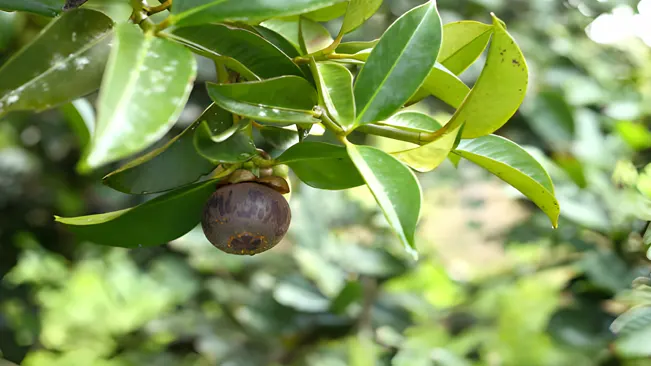
Health Benefits of Mangosteen
| Benefit | Description |
|---|---|
| Rich in Antioxidants | Mangosteen is packed with antioxidants, particularly xanthones, which help to combat free radicals and reduce oxidative stress. |
| Anti-inflammatory Properties | Xanthones in mangosteen also exhibit anti-inflammatory effects, helping to reduce inflammation and associated pain. |
| Boosts Immune System | High vitamin C content and other immune-boosting nutrients help strengthen the body’s defense against infections. |
| Supports Skin Health | Antioxidants and anti-inflammatory properties contribute to healthier skin, potentially aiding in reducing signs of aging and skin inflammation. |
| Promotes Heart Health | Mangosteen may help lower bad cholesterol levels and improve blood flow, thus supporting cardiovascular health. |
| Aids in Digestive Health | The fiber content in mangosteen aids in digestion and helps maintain a healthy gut. |
| Anti-cancer Properties | Some studies suggest that xanthones in mangosteen have anti-cancer properties and may inhibit the growth of cancerous cells. |
| Helps Control Blood Sugar Levels | Nutrients in mangosteen might help in managing blood sugar levels, beneficial for people with diabetes. |
| Potential Weight Loss Aid | The low calorie and high fiber content in mangosteen can contribute to weight loss as part of a healthy diet. |
| Enhances Mental Health | The nutrient composition in mangosteen might have a positive impact on mental health by reducing stress and anxiety levels. |
Understanding the Mangosteen Tree
Before you start planting, it’s important to understand the mangosteen tree’s requirements. It thrives in tropical climates and does not tolerate temperatures below 4°C (40°F). The tree can grow up to 6-25 meters in height and prefers acidic, well-drained soil.

Climate Adaptation
- Native to Southeast Asia’s humid, warm climate.
- Thrives in temperatures of 25°C-35°C (77°F-95°F).
- Sensitive to temperatures below 4°C (40°F).
Size and Growth Habit
- Grows 6-25 meters tall.
- Slow-growing, with a pyramid-shaped canopy and dark bark.
Soil Preferences
- Prefers acidic soil (pH 5.5-6.8) rich in organic matter.
- Needs well-drained yet moisture-retentive soil.
Sunlight and Shade
- Requires partial shade when young.
- Tolerates more sunlight as it matures.
Water Requirements
- Consistent watering is crucial.
- Soil should be kept evenly moist.
Special Considerations
- Slow to mature, taking 7-10 years to bear fruit.
- Requires space for root growth, avoid crowding.
Seed Selection and Germination
Seed Selection
Selecting the right seeds is crucial for successful germination. Here are key points to consider:
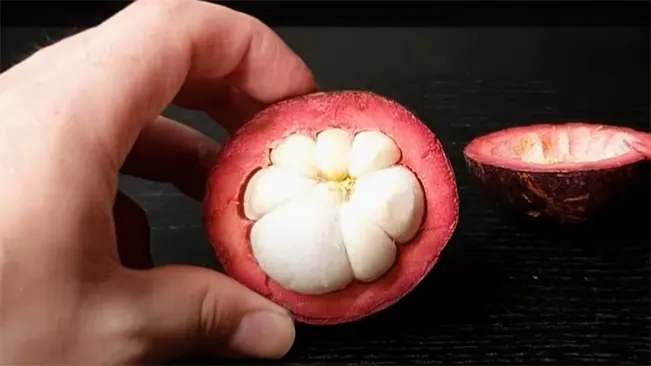
- Freshness: Mangosteen seeds are recalcitrant, meaning they lose viability quickly when they dry out. It’s essential to use fresh seeds, ideally obtained directly from a ripe fruit.
- Ripeness of Fruit: Ensure that the mangosteen fruit is ripe. A ripe mangosteen is usually dark purple and slightly soft to the touch.
- Seed Quality: Look for seeds that are plump and free of cracks or blemishes. Avoid seeds that look shriveled or discolored, as they are less likely to germinate.
Cleaning the Seeds
Properly cleaning the seeds is a simple yet important step:

- Gentle Washing: Rinse the seeds under running water to remove any attached fruit pulp, which can lead to fungal growth during germination.
- Drying: Pat the seeds dry gently with a paper towel. Do not let them dry out completely; they should remain moist.
Germination Process
Mangosteen seeds require a warm, humid environment to germinate:

- Moisture: Wrapping the seeds in moist sphagnum moss or a damp paper towel is crucial. The moisture encourages the seeds to germinate without being so wet that they rot.
- Humidity: Placing the wrapped seeds in a sealed container or a plastic bag helps to maintain a high humidity level, which is essential for mangosteen seed germination.
- Warmth: A consistent warm temperature of around 25°C (77°F) is ideal. You can use a heat mat under the container to maintain this temperature if you’re in a cooler environment.
- Monitoring: Check the seeds regularly for signs of mold or rot, and ensure the moss or paper towel remains moist but not waterlogged.
- Patience: Germination can take 20-22 days, and during this time, it’s important to be patient and maintain the ideal conditions.
Planting
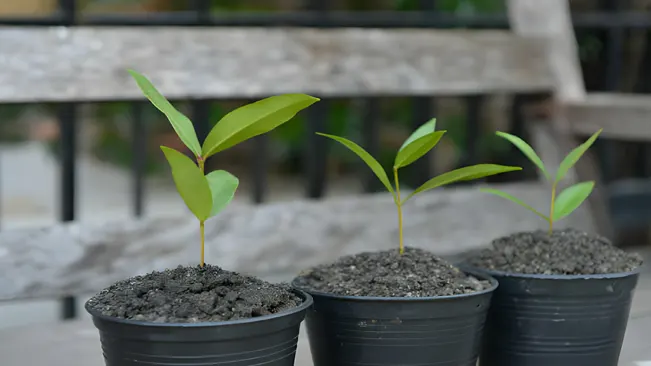
Preparing the Planting Site
- Selecting the Right Location: It’s essential to choose a location that can accommodate the full grown size of a mangosteen tree, which can reach heights of 6-25 meters. The area should be spacious enough to allow for its wide canopy.
- Soil Preparation: Mangosteen trees prefer rich, well-drained soil. To enhance your soil, mix in plenty of organic matter like compost or well-rotted manure. This improves soil fertility and drainage. The ideal soil pH should be slightly acidic, between 5.5 and 6.8. If necessary, test the soil pH and adjust it using soil amendments.
- Creating Shade: Young mangosteen trees are sensitive to direct sunlight. If natural shade isn’t available, you might need to create artificial shade using shade cloth or by planting near taller trees that can provide filtered sunlight.
Planting the Seedlings
- Digging the Holes: Dig a hole for each seedling that is twice as wide and just as deep as the root ball of the seedling. This gives the roots plenty of room to spread out.
- Planting Depth: Place the seedling in the hole so that the top of the root ball is level with the soil surface. Backfill the hole with soil and gently firm it down to eliminate air pockets.
- Watering: After planting, water the seedling thoroughly. This helps settle the soil around the roots and provides necessary moisture for the plant to start establishing itself in its new location.
- Spacing: If planting multiple mangosteen trees, space them adequately to allow for their full growth. This also ensures proper air circulation, which is vital for preventing fungal diseases.
Aftercare Post-Planting
- Mulching: Apply a layer of organic mulch around the base of each seedling. Mulch helps retain soil moisture, keeps roots cool, and reduces weed growth.
- Regular Watering: Especially in the early stages of growth, it’s important to keep the soil consistently moist. However, be careful not to overwater as mangosteen does not tolerate waterlogged conditions.
- Observation: Keep an eye on your seedlings for signs of stress, such as wilting or discoloration. Adjust care as necessary.
Patience and Monitoring
- Growth Expectations: Mangosteen trees grow slowly and take several years to mature. Regularly monitor their growth and health, adjusting care practices as the tree develops.
- Protection from Elements and Pests: Young trees are vulnerable to environmental stresses and pests. Protect them from strong winds and pests by using appropriate barriers or organic pest control methods.
Watering and Mulching
Watering Mangosteen Trees
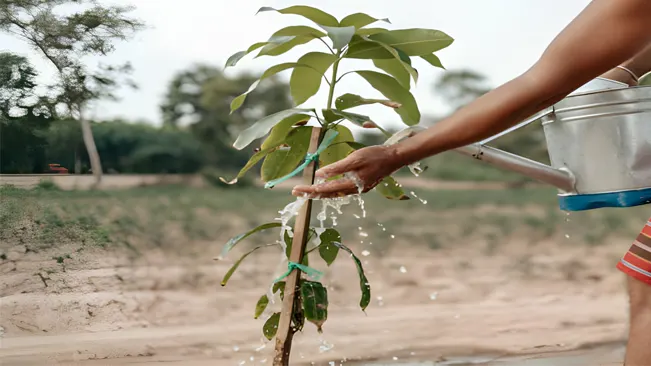
- Consistency is Key: Mangosteen trees need a consistent supply of moisture. They are sensitive to both drought and waterlogging. The goal is to maintain an even level of soil moisture.
- Frequency and Amount: The frequency of watering will depend on your climate and soil type. In general, watering should be done when the top inch of soil feels dry. Deep watering, where water reaches the deeper roots, is preferable to frequent shallow watering.
- Monitoring Soil Moisture: It’s crucial to monitor the soil moisture regularly, especially during dry spells or in particularly hot climates. Using a soil moisture meter can be helpful.
- Seasonal Adjustments: Water requirements may decrease during the rainy season and increase in dry or hot seasons. Adjust your watering schedule accordingly.
Mulching Mangosteen Trees
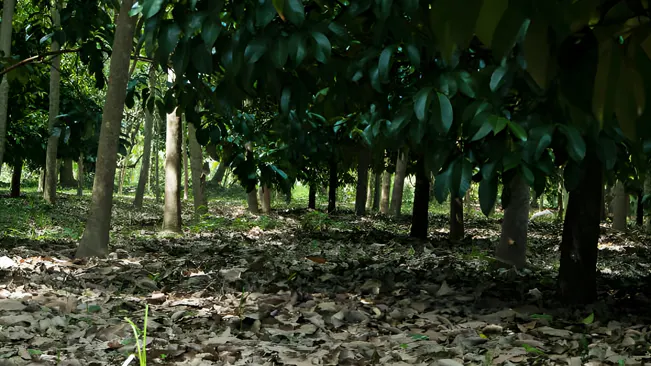
- Purpose of Mulching: Mulching serves multiple purposes. It helps retain soil moisture, reduces temperature fluctuations, and can also prevent weed growth.
- Types of Mulch: Organic mulch is most beneficial for mangosteen trees. This includes materials like straw, wood chips, bark, or composted leaves. Organic mulch breaks down over time, enriching the soil with nutrients.
- Applying Mulch: Spread the mulch evenly around the base of the tree, extending out to the drip line (the area directly beneath the outer circumference of the tree branches). Avoid piling mulch against the trunk, as this can cause rot or pest problems.
- Depth of Mulch: A 2-4 inch layer of mulch is typically recommended. This thickness is sufficient to retain moisture and regulate temperature without suffocating the roots or preventing water infiltration.
- Regular Maintenance: Check and replenish the mulch layer regularly, especially in seasons with heavy rainfall or high winds, as the mulch can decompose or be displaced.
Fertilizing
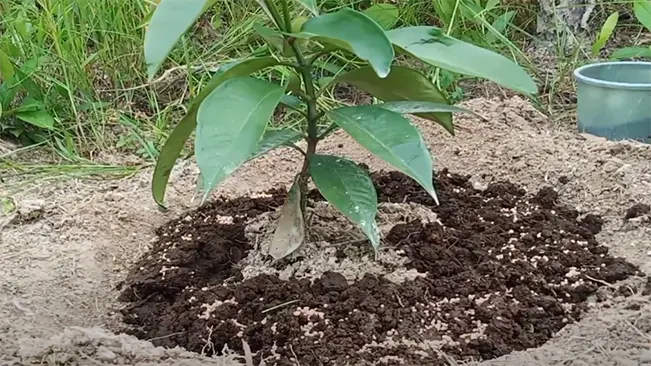
Why a Balanced Fertilizer is Important
- Nutrient Balance: Mangosteen trees require a range of nutrients for optimal growth. A balanced fertilizer ensures that the tree receives an appropriate mix of essential nutrients.
- Magnesium, Nitrogen, and Potassium:
- Magnesium is vital for photosynthesis as it is a core component of chlorophyll.
- Nitrogen is essential for growth and development, contributing to the formation of proteins and leaf growth.
- Potassium aids in various plant functions, including water regulation, enzyme activation, and the synthesis of proteins and starches.
Choosing a Slow-Release Fertilizer
- Sustained Nutrient Supply: Slow-release fertilizers provide a steady supply of nutrients over an extended period, which is beneficial for consistent growth and reduces the risk of nutrient burn.
- Reduced Application Frequency: Because they release nutrients slowly, these fertilizers don’t require frequent application, saving time and effort.
Avoiding Over-Fertilization
- Root Burn Risk: Excessive fertilization can lead to a high concentration of salts in the soil, which can damage or burn the tree’s roots.
- Nutrient Imbalance: Over-fertilizing can create an imbalance in the soil’s nutrient content, leading to deficiencies or toxicities of certain nutrients.
- Environmental Concerns: Excess fertilizer can leach into the groundwater or run off into nearby water sources, causing environmental problems.
Best Practices for Fertilizing Mangosteen Trees
- Soil Testing: Before applying fertilizer, conduct a soil test to determine the existing nutrient levels and pH. This helps in choosing the right fertilizer and the correct amount.
- Application Timing: The best time to fertilize is during the growing season, usually in the spring and summer. Avoid fertilizing during the dormant season.
- Proper Application: Apply fertilizer evenly around the base of the tree, extending out to the drip line. Avoid placing fertilizer directly against the trunk as this can cause damage.
- Watering: After applying fertilizer, water the tree thoroughly. This helps in dissolving the fertilizer and distributing the nutrients evenly in the soil.
- Monitoring Tree Health: Keep an eye on your tree’s growth and appearance. Signs of over or under-fertilization can include yellowing leaves, stunted growth, or leaf burn.
Pruning and Maintenance
Pruning
Pruning is an important aspect of mangosteen tree care, though it’s generally more critical for mature trees than young ones. Here are some key points:
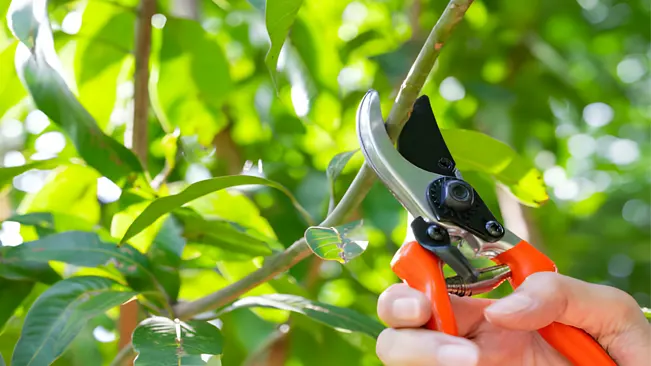
- Young Trees: In the early stages, mangosteen trees require minimal pruning. The main goal for young trees is to encourage a strong, healthy structure. Removing broken or diseased branches is usually sufficient.
- Mature Trees: As the tree grows, pruning helps to maintain its shape, remove unproductive branches, and improve air circulation. Proper pruning can also enhance fruit production in mature trees.
- Technique: When pruning, make clean cuts close to the branch collar. Avoid leaving large stubs as these can lead to disease. Always use sharp, sterilized pruning tools to prevent the spread of disease.
- Timing: The best time to prune a mangosteen tree is during the dry season when the tree is less susceptible to fungal infections that can enter through pruning cuts.
Maintenance and Pest Control
Regular maintenance and pest control are crucial for the health of mangosteen trees.
- Regular Inspection: Frequently inspect the tree for signs of pests or diseases. Look for changes in leaf color, spots on leaves, or signs of insect infestation.
- Organic Pest Control: Prefer organic methods for pest control to maintain ecological balance and avoid chemical residues on fruits. Natural predators, neem oil, or insecticidal soaps can be effective.
- Disease Management: Fungal diseases are common in humid climates. Ensure good air circulation around the tree and avoid overhead watering to reduce humidity levels around the foliage. Remove and destroy any infected plant parts.
- Soil Health: Keep the soil healthy. Mulching helps in retaining moisture, regulating soil temperature, and reducing weed growth.
- Watering: While mangosteen trees like moist soil, they are susceptible to root rot in waterlogged conditions. Ensure the planting site has good drainage.
- Fertilization: Regularly fertilize the tree with a balanced fertilizer but avoid over-fertilization, which can harm the tree.
Conclusion
Planting a mangosteen tree is a long-term investment that can yield delicious rewards. By providing the right conditions and care, you can successfully grow this exotic fruit in your own backyard. Embrace the process, and in time, you’ll enjoy the fruits of your labor – both literally and figuratively.
FAQs (Frequently Asked Questions)
- What climate is best for growing mangosteen?
Mangosteen thrives in a tropical climate and cannot withstand temperatures below 4°C (40°F). A humid, warm environment with adequate rainfall is ideal. - How do I germinate mangosteen seeds?
Clean fresh seeds and wrap them in moist sphagnum moss or a wet paper towel. Place them in a sealed container in a warm area. Germination usually occurs within 20-22 days. - Can I grow mangosteen from store-bought fruit?
Yes, but ensure the fruit is fresh, and the seeds are planted immediately, as they lose viability quickly. - What kind of soil is best for mangosteen trees?
Mangosteen prefers rich, well-drained, slightly acidic soil with a pH between 5.5 and 6.8. - How much sunlight does a mangosteen tree need?
Young trees should be planted in a shaded area as they are sensitive to direct sunlight. Mature trees can handle more sunlight. - How often should I water a mangosteen tree?
Water regularly to keep the soil evenly moist. Avoid overwatering which can lead to root rot. - When does a mangosteen tree bear fruit?
Mangosteen trees typically take 7-10 years to begin bearing fruit. - Do I need to prune my mangosteen tree?
Pruning is not usually required for young trees. For mature trees, remove dead or diseased branches to maintain health. - How do I fertilize a mangosteen tree?
Use a balanced, slow-release fertilizer rich in magnesium, nitrogen, and potassium. Avoid over-fertilizing. - How can I protect my mangosteen tree from pests and diseases?
Regularly inspect the tree and treat pests or diseases promptly. Using organic methods of pest control is often recommended.

Kristine Moore
Forestry AuthorI'm Kristine Moore, a seasoned garden landscaping professional with over 30 years of experience. My extensive career has been dedicated to transforming outdoor spaces into stunning, sustainable landscapes. With a deep understanding of horticulture, design principles, and environmental stewardship, I have become a respected figure in the field, known for creating harmonious, visually appealing, and eco-friendly gardens. My commitment to excellence and continuous learning in landscaping trends and techniques has solidified my reputation as an expert in garden design and implementation.












Leave your comment